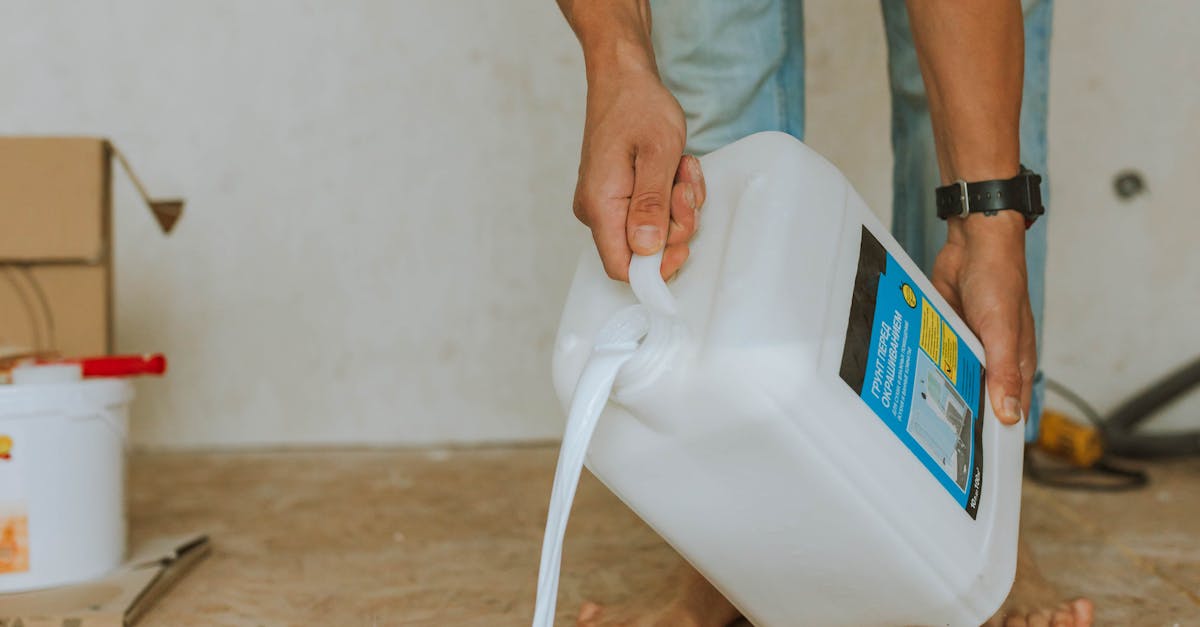
Mixing the ThinSet Mortar
When preparing for tile floor installation, mixing thin-set mortar correctly is crucial for achieving a strong bond between the tiles and the substrate. Begin by selecting a high-quality thin-set mortar that matches your tile type and environmental conditions. Follow the manufacturer's instructions for the correct ratio of mortar to water, using a clean bucket for mixing. Start by adding water to the bucket first, then gradually incorporate the dry thin-set while stirring continuously. This method helps prevent clumping and ensures an even consistency.
Once mixed, let the mortar sit for about 10 minutes. This allows the ingredients to hydrate properly. After the resting period, stir the mixture again briefly to achieve a smooth and workable consistency. The final product should be trowelable without being too runny. Properly mixed thin-set mortar is vital to the success of your tile floor installation, as it provides the necessary adhesion for a lasting finish.
Proper Ratios and Application Techniques
A crucial aspect of successful tile floor installation involves mixing the thin-set mortar to the correct consistency. Typically, a ratio of one part water to three parts dry mortar is recommended, but manufacturers often provide specific guidelines on their product packaging. It's essential to use clean water and ensure the mixture is even without lumps. Mixing should occur in a bucket using a paddle attachment for a drill, which helps achieve a smooth consistency that enhances the mortar's bonding ability when applied.
Application techniques also play a pivotal role in tile floor installation. Using a notched trowel, apply the mixed mortar evenly to the substrate, ensuring the mortar covers the area where the tile will be placed. The size of the notched trowel should match the tile size; larger tiles typically require a larger notch to accommodate proper adhesion. After applying the mortar, it's critical to press each tile firmly into place while gently twisting to ensure full contact with the mortar bed. This technique minimizes the risk of air pockets that can compromise the overall integrity of the installation.
Laying the First Tile
Before laying the first tile, take the time to carefully plan your layout. It is essential to establish a straight line that will serve as a guide for the entire installation process. Use a chalk line or a laser level for accuracy. This initial step is crucial as it sets the tone for the rest of the tile floor installation. Making sure your first tile is placed correctly will help prevent misalignment later on.
Once you have established your straight line, apply thin-set mortar to the substrate using a trowel. It is important to spread the mortar evenly to create a solid bond. Press the tile firmly into the mortar and use a slight twisting motion to ensure it adheres well. After placing the first tile, check that it is level and aligned with your chalk line before moving on to the next tiles. This attention to detail is vital for achieving a professional-looking finish.
Establishing a Straight Line
Establishing a straight line is crucial for a successful tile floor installation. Begin by measuring the room and determining the center point. From this point, snap a chalk line down the length and width of the room. This will serve as a visual guide for placing the first row of tiles. Ensuring accuracy at this stage can prevent misalignment and save time further along in the installation process.
After creating your guide lines, it’s important to check that they are square using a carpenter's square. This will help maintain even tile placement throughout the entire surface. If the lines are not square, adjustments can be made before proceeding. Visualizing the layout with the lines will help you better plan where to place tiles and ensure a professional-looking finish in your tile floor installation.
Cutting Tiles for Edges and Corners
When undertaking tile floor installation, precise cutting of tiles is essential for achieving a professional finish. Utilizing the right tools can significantly enhance the quality of your cuts. A tile cutter, either manual or electric, is specifically designed for this purpose. For intricate or irregular shapes, a wet saw or tile nipper can provide the accuracy needed to navigate around corners and edges. Ensuring that tiles fit snugly against walls or fixtures not only improves aesthetics but also minimizes the risk of damage.
Measuring before cutting is crucial to avoid wasting materials and to achieve a seamless appearance. Take careful measurements of the space where the tile will be laid, and always mark the tile with a pencil for clarity. When cutting, apply steady pressure to create a clean edge. If dealing with porcelain or harder tiles, make sure to use a proper blade designed for tougher materials. These techniques will contribute significantly to the overall quality of your tile floor installation, ensuring that no visible gaps detract from the desired outcome.
Tools and Methods for Precision Cuts
When undertaking tile floor installation, achieving clean and precise cuts is essential for a professional finish. A wet saw is one of the most effective tools for making long and straight cuts through various tile materials. Its water-cooled blade minimizes dust and helps prevent the tile from cracking during the cutting process. For smaller or more intricate cuts, a tile cutter or a handheld tile nipper can provide the detail required. Using these tools effectively allows for smoother edges that fit seamlessly into corners and along walls.
In addition to selecting the right tools, employing proper cutting techniques can significantly enhance the quality of the cuts. Marking the tile with a pencil for accuracy helps guide cuts, ensuring they follow the desired line without deviations. When using a wet saw, it is important to feed the tile steadily into the blade, applying even pressure for a consistent cut. For curved cuts, creating a series of small notches with a tile nipper allows for more control and flexibility. Mastering these methods is key to successful tile floor installation and enhancing the overall appearance of the project.
FAQS
What type of mortar should I use for laying floor tiles?
It's best to use a thin-set mortar specifically designed for floor tiles, as it provides the right adhesion and durability needed for a strong bond.
How do I ensure my first tile is laid straight?
Establish a straight line by using a chalk line or a laser level as a guide, ensuring that your first tile is aligned properly to maintain uniformity throughout the installation.
What tools do I need to cut tiles accurately?
Essential tools for cutting tiles include a tile cutter, wet saw, tile nippers, and a measuring tape for precise measurements.
Can I lay tiles on an uneven floor?
Ideally, tiles should be laid on a level surface. If your floor is uneven, it's advisable to level it out with a self-leveling compound before installing the tiles.
How long should I wait before walking on newly laid tiles?
It's recommended to wait at least 24 to 48 hours after laying the tiles before walking on them to allow the mortar to cure properly.
